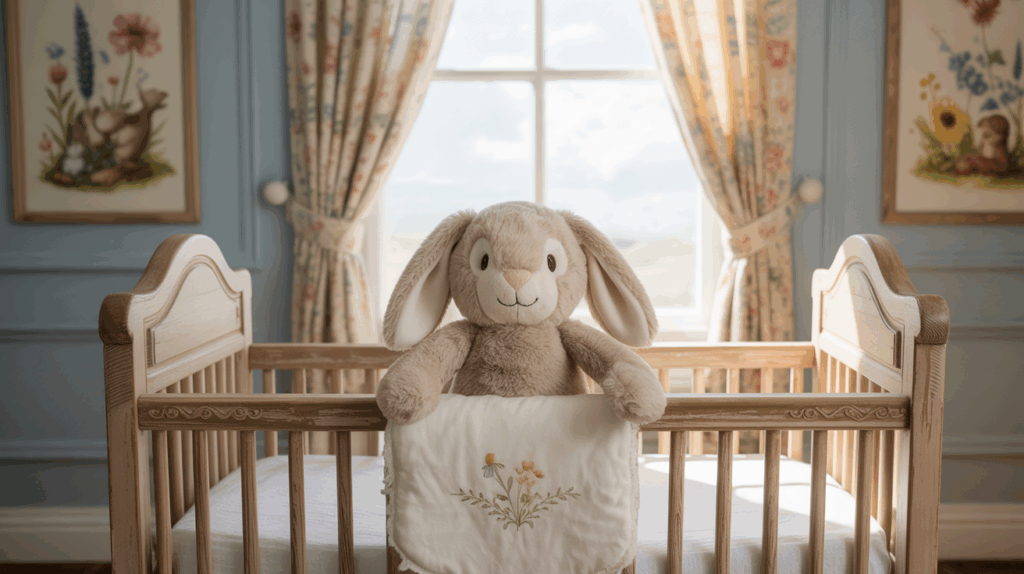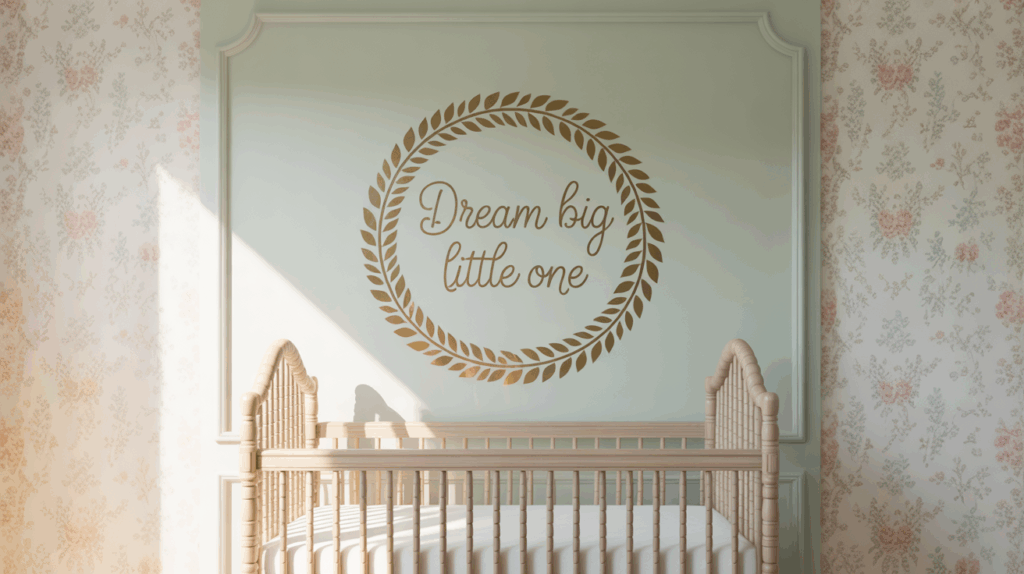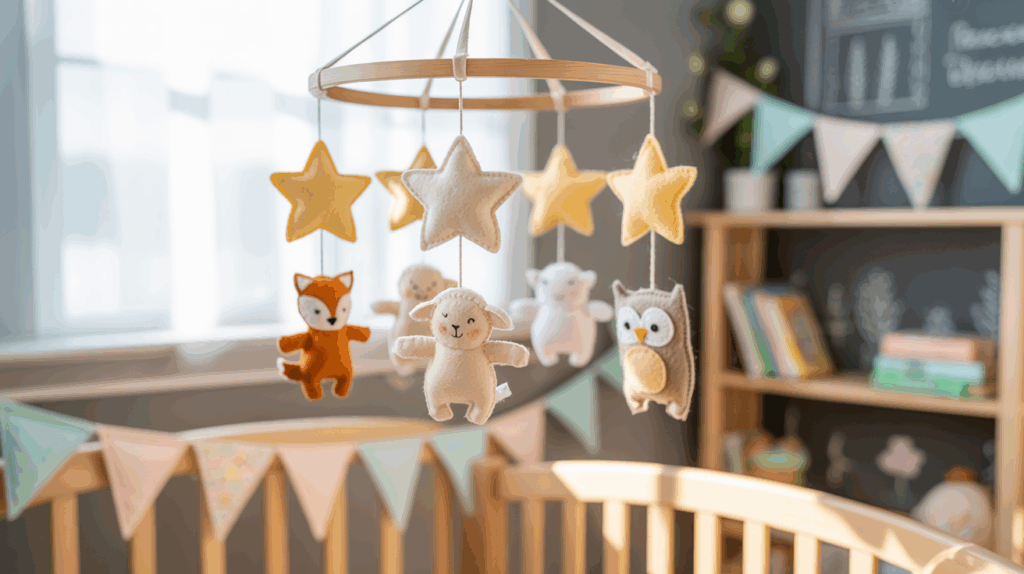Budget-Friendly Storybook Nursery Theme Ideas
Table of Contents
Bring childhood magic to life without breaking the bank
Every parent dreams of crafting a beautiful, enchanting space for their baby—one that feels pulled from the pages of a favorite storybook. But let’s be honest: nursery design can quickly become expensive, especially when aiming for a theme as whimsical and immersive as a storybook-inspired space. The good news? You don’t need a huge budget to achieve the look. With a little creativity, repurposing, and attention to detail, you can design a budget-friendly storybook nursery that feels truly magical.
Storybook nurseries invite soft textures, muted pastels, playful illustrations, and a touch of nostalgia. Whether you’re inspired by woodland creatures, classic fairytales, or vintage children’s literature, the possibilities are endless. And what’s more, many of the best ideas involve DIY projects, secondhand finds, or small decorative details that speak volumes without a high price tag.
In this article, we’ll explore how to create a whimsical, storybook nursery without overspending. From clever wall treatments and character-inspired accents to upcycled furniture and cozy textiles, each section provides practical ideas to help you bring your vision to life affordably—because every child deserves a space filled with wonder.
Start with a Story: Choosing a Theme That Inspires
The heart of a storybook nursery is, naturally, the story. Begin by choosing a central theme that resonates with you—this could be a beloved children’s book, a fairytale, or even a genre like woodland adventures or enchanted gardens. Having a clear narrative will help guide your color choices, wall decor, and furniture styling.
Popular budget-friendly themes include:
- Winnie the Pooh: Soft yellows and forest greens with vintage illustrations
- Peter Rabbit: English cottage charm, florals, and rustic textures
- Fairytale Forest: Mushrooms, fawns, and soft greenery
- Classic Nursery Rhymes: A patchwork of playful characters and quotes
Once you’ve chosen your direction, create a simple mood board using free tools like Canva or Pinterest. This visual guide will help you stay focused when sourcing decor and prevent impulse buys.
Theme Planning Table:
| Theme Name | Color Palette | Suggested Elements |
| Winnie the Pooh | Honey yellow, green, taupe | Soft plush bears, woodland prints |
| Peter Rabbit | Blue, white, garden greens | Floral patterns, vintage bunny art |
| Enchanted Forest | Sage, blush, mushroom red | Felt animals, trees, toadstools |
| Classic Rhymes | Pastels, primary accents | Story quote decals, alphabet decor |

Budget Wall Decor with Storybook Personality
Wall treatments are one of the easiest ways to make a big impact without spending a lot. Paint and decals are affordable and flexible enough to change over time as your child grows. Choose a soft, neutral base color and layer in themed touches.
Peel-and-stick wall decals inspired by storybook illustrations are a top choice for renters or non-permanent designs. You can find decals of animals, stars, trees, or quotes from favorite stories online or even create your own with a Cricut or printable transfer paper.
Another inexpensive idea is to frame pages from secondhand or damaged children’s books. These make adorable gallery walls or reading nook accents and often cost less than $1 per page. Paint the frames in your chosen palette for a cohesive look.
Budget Wall Decor Ideas:
| Idea | Cost-Effective Alternative | Styling Tip |
| Wall Decals | DIY printables or Cricut designs | Apply above crib or changing table |
| Framed Storybook Pages | Use thrifted books and repurposed frames | Cluster in odd numbers for balance |
| Painted Wall Mural | Freehand or stencil-style design | Focus on a single wall for impact |
| Story Quotes in Script Font | Use removable vinyl or paint pens | Choose a beloved line from your theme |

Creative DIY Decor Projects for a Personalized Touch
DIY projects are the key to infusing your nursery with character while sticking to your budget. Many storybook themes lend themselves well to hand-crafted elements that feel both nostalgic and charming.
Start with fabric bunting made from old baby clothes or thrifted textiles. Cut triangles or scalloped shapes and string them above a reading corner or across a window. Paint wooden letters to spell out your baby’s name using colors and motifs from your chosen theme.
Another simple yet impactful project is a mobile. Create a hanging piece with soft felt clouds, stars, forest animals, or story characters. These can be stitched by hand or hot-glued and hung from an embroidery hoop or driftwood branch.
If you’re handy with a paintbrush, consider upcycling a bookshelf or side table to match your theme. A coat of chalk paint and some stenciled details can turn a plain furniture piece into a standout focal point.
DIY Decor Table:
| Project Idea | Supplies Needed | Budget Tips |
| Fabric Bunting | Fabric scraps, twine, scissors | Repurpose baby clothes or old linens |
| Felt Mobile | Felt sheets, thread, embroidery hoop | Mix colors to match theme palette |
| Painted Letters | Wooden letters, acrylic paint | Check craft store clearance bins |
| Upcycled Furniture | Chalk paint, stencils, sealer | Find free items via local marketplaces |

Thrifted Furniture Finds with Storybook Charm
Storybook nurseries often feature heirloom-style furniture—think vintage cribs, delicate dressers, or rocking chairs that feel plucked from a fairytale. Luckily, many of these pieces can be found secondhand and transformed with a bit of care.
Look for solid wood furniture at estate sales, thrift stores, or online marketplaces. Even if the finish is outdated, a coat of soft paint or new knobs can breathe new life into it. Consider distressing edges lightly for a well-loved, antique feel.
Multifunctional pieces like a dresser with changing table top or a storage bench for toys save space and money. Pair them with soft elements like crocheted blankets, lace runners, or floral fabric liners to elevate the look.
Keep safety in mind with any used items. Refinish with non-toxic paints, seal well, and ensure cribs meet current safety standards.
Furniture Ideas and Finishes:
| Furniture Piece | Style Finish | Where to Source |
| Crib | White or soft pastel chalk paint | Local thrift or Facebook Marketplace |
| Rocking Chair | Natural wood with plush cushion | Ask relatives or buy secondhand |
| Bookshelf | Painted with floral or star stencil | DIY or upcycle from existing furniture |
| Changing Table | Add floral liners or scalloped trim | Pair with wall basket storage above |
Textiles That Tell a Story: Cozy and Themed Layers
Textiles are essential in bringing the storybook theme to life and creating a warm, inviting atmosphere. From crib sheets to curtains and rugs, every soft surface is an opportunity to build your narrative.
Choose prints and fabrics that reflect your chosen story or theme. Floral patterns work beautifully for Peter Rabbit or Little Red Riding Hood, while starry skies and moons fit lullaby or celestial themes. Mix solids with subtle patterns to avoid visual overload and maintain a restful tone.
Layering is key—add a knit or quilted blanket, a plush floor rug for tummy time, and blackout curtains in coordinating colors. Etsy, clearance sales, and even handmade options from local makers often yield unique finds at lower prices.
Textile Styling Table:
| Item | Theme-Appropriate Style | Where to Save |
| Crib Sheets | Floral, toile, starry sky prints | Mix high and low brands |
| Throw Blankets | Hand-knit, lace-trimmed, muslin | Local artisans, online handmade shops |
| Curtains | Soft linen or cotton, pastel tones | Look for sets in off-season sales |
| Area Rug | Story pattern or soft shag | Use washable options for function + style |
Conclusion
Designing a budget-friendly storybook nursery is all about imagination, creativity, and thoughtful sourcing. With the right theme and a touch of DIY charm, you can craft a magical space where your baby can dream, grow, and feel comforted.
You don’t need brand-new everything to create something special. In fact, some of the most beautiful nursery spaces are built around thrifted treasures, handmade details, and meaningful items that tell a story—just like the pages of a beloved book.

